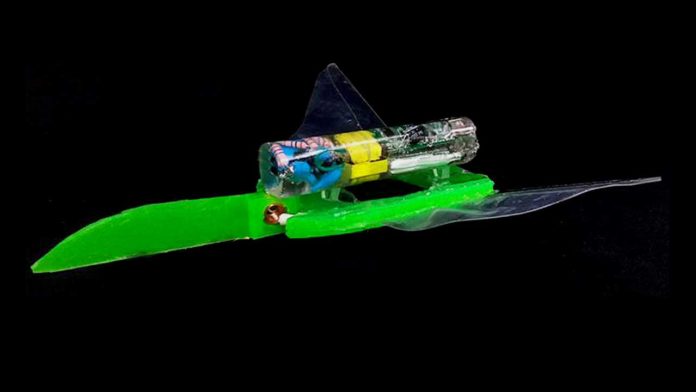Due to stimuli-responsive materials, soft robots have decent qualities over conventional rigid robots. They have high adaptability for field exploration and seamless interaction with humans. But the challenge is to develop self-powered soft robots with high mobility, environmental tolerance, and long endurance. Scientists from the Zhejiang University in China have recently developed a small, soft-bodied robot that is able to swim twice faster than other similar robots.
The best way to propel a robot underwater is to develop soft robots with fins, soft bodies, and soft parts. To develop this new soft-bodied robot, scientists used flexible materials for the body. But the difficult task was to create flexible power source. By making effort for this problem, scientists got around that problem by eliminating the need for a motor and using the water in which the artificial fish swims as the ground electrode.
Scientists created the robot’s body from silicon that consist of a pocket for a battery. They used a few electronics for wireless control and an electrode that runs into the fins. Its components made from a type of hydrogel responds to small electric current. This current turns a charge from the battery on and off causes the hydrogel to contract and ease like muscles. This causes flapping and, pushing the robot through the water.
Scientists also added a tail that moves using an electromagnet. The robot that is 9.3 centimeters long looks like a manta-ray. It is a robot that can swim three centimeters per second for approximately three hours on a single charge. It can swim at a speed of 6.4 cm/s (0.69 body length per second). The robot also operates via tether for unlimited power and faster swimming, handle hot and cold water, and is strong enough to carry a small video camera.
Scientists noted, “This robot could be used as water monitors in lakes, streams or the ocean. It could also be used to look for survivors of plane crashes or boat accidents or by the military as a spy drone—the entire robot can be made transparent except for the battery, receiver, and electrode.”
